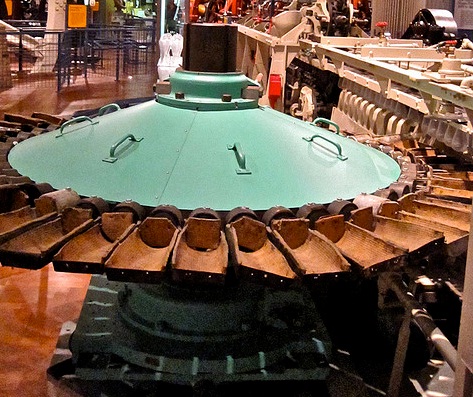While Thomas Edison perfected the first practical and durable filament in 1879, it was not until much later that electricity left the laboratory to become the universal source of light. This required a tremendous number of glass envelopes for light bulbs. In the 1890s the top speed of the finest glass-blowing team produced two bulbs a minute. In 1926 Corning Glass Works developed the ribbon machine, capable of producing up to two thousand light bulbs a minute.
In principle, molten glass sags through a hole in a horizontal plate into a mold below and is expanded by air pressure to form an electric light bulb envelope. Continuous motion is achieved by moving a preformed ribbon of glass with precisely matched chains of orifice plates, molds, and blowheads.
The ribbon machine, now operating the world over, was conceived by William J. Woods and designed in collaboration with David E. Gray.



